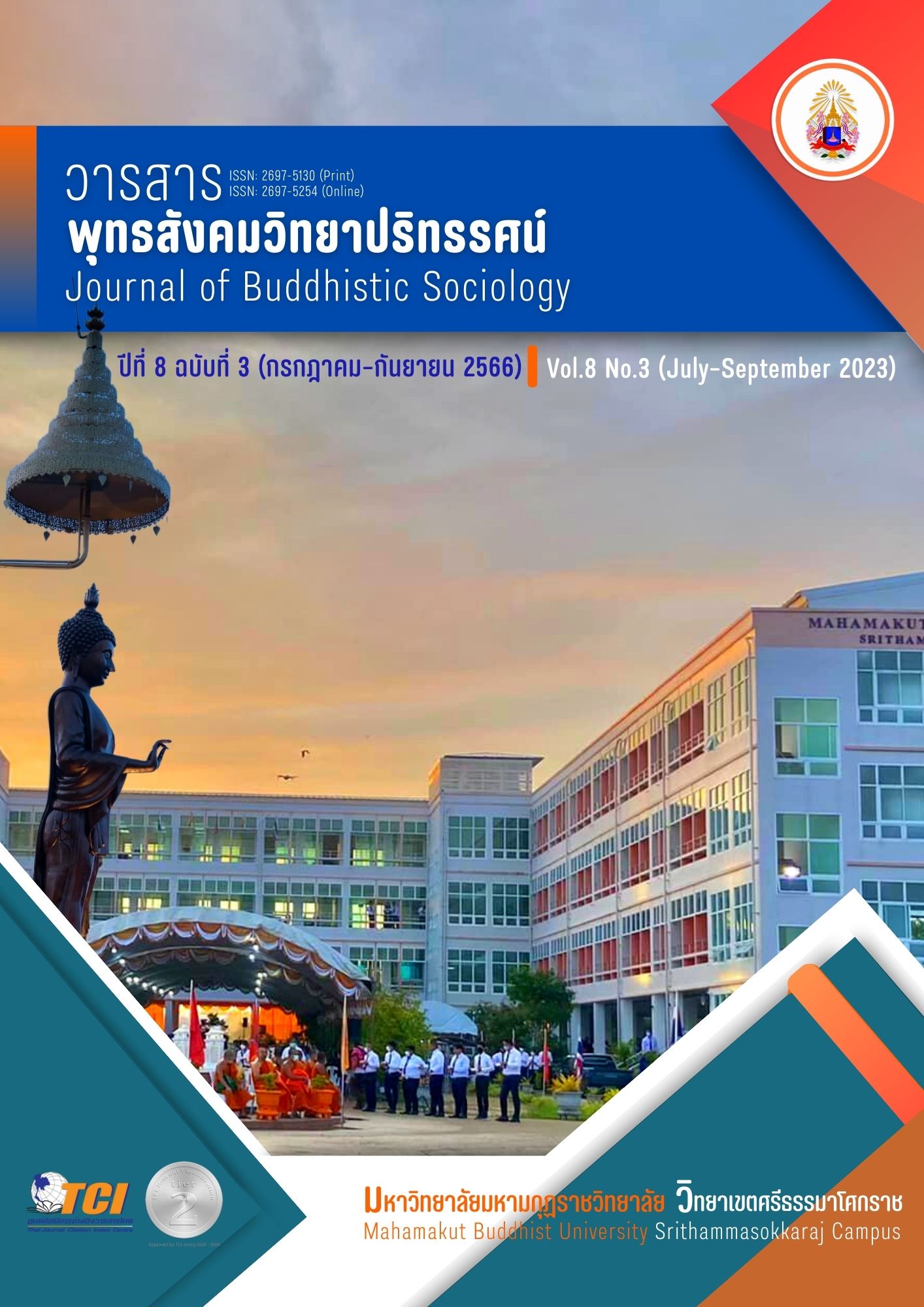LEADERSHIP OF SCHOOL ADMINISTRATORS IN THE 21ST CENTURY AFFECTING THE EFFECTIVENESS IN SCHOOLS UNDER THE SECONDARY EDUCATIONAL SERVICE AREA OFFICE NAKHON SI THAMMARAT
Main Article Content
Abstract
This research aimed to study 1) the leadership level of school administrators in the 21st century under the Nakhon Si Thammarat (NST) Secondary Education Service Area Office, 2) the effectiveness of educational institutions under the NST Secondary Education Service Area Office, and 3) the relationship between the leadership of school administrators in the 21st century and the effectiveness of educational institutions under the NST Secondary Education Service Area Office. The sample group was 338 teachers working under the NST Secondary Educational Service office in the academic year 2022. The research instrument was a questionnaire. The statistics used for data analysis were frequency, percentage, mean, and standard deviation.
The results showed that:
1. The leadership level of school administrators in the 21stcentury under the office of NST Secondary Educational Service was at the highest level overall and in each aspect. The highest average was for leaders with technology literacy in the 21st century. The lowest average was for leaders who influence their colleagues.
2. The effectiveness level of educational institutions in the 21stcentury, affecting the effectiveness of educational institutions under the office of NST Secondary Educational Service, was at the highest level overall and in each aspect. The highest average was for the teacher's job satisfaction, and the lowest was for the quality assurance.
3. Overall, the relationship between the leadership of school administrations in the 21stcentury affecting the effectiveness of schools under the Office of NST Secondary Educational Service was at a high positive correlation (r = 0.861) with a statistical significance at the .01 level.
Article Details

This work is licensed under a Creative Commons Attribution-NonCommercial-NoDerivatives 4.0 International License.
References
ชัยวัฒน์ พนมวรชัย. (2563). ความสัมพันธ์ระหว่างภาวะผู้นำการเปลี่ยนแปลงของผู้บริหารสถานศึกษาในศตวรรษที่ 21 กับความผูกพันต่อองค์การของครูในโรงเรียนเครือข่ายมูลนิธิลาซาล. ใน วิทยานิพนธ์ครุศาสตรมหาบัณฑิต สาขาวิชาการบริหารการศึกษา. มหาวิทยาลัยราชภัฏรำไพพรรณี.
ชูศรี วงศ์รัตนะ. (2544). การวิจัยเพื่อการเรียนรู้. กรุงเทพมหานคร: ทิปพับลิเคชั่น.
นิศาชล นามสาย และคณะ. (2562). สมรรถนะผู้บริหารโรงเรียนในศตวรรษที่ 21 สังกัดสำนักงานเขตพื้นที่การศึกษาประถมศึกษายโสธรเขต 1. วารสารการบริหารการศึกษาและภาวะผู้นำ มหาวิทยาลัยราชภัฏสกลนคร, 8(30), 239-246.
นุช สัทธาฉัตรมงคล และอรรถพล ธรรมไพบูลย์. (2559). ผู้นำการเปลี่ยนแปลงในยุคโลกาภิวัฒน์สู่การพัฒนาอย่างยั่งยืน. วารสารธุรกิจปริทัศน์, 8(1), 167-182.
รัตนา เหลืองาม. (2562). ภาวะผู้นำของผู้บริหารสถานศึกษาในศตวรรษที่ 21 ที่ส่งผลต่อประสิทธิผลของสถานศึกษา สังกัดสำนักงานเขตพื้นที่การศึกษาประถมศึกษาจันทบุรี เขต 1. ใน วิทยานิพนธ์ครุศาสตรมหาบัณฑิต สาขาวิชาการบริหารการศึกษา. มหาวิทยาลัยราชภัฏรำไพพรรณี.
สาคร สุขศรีวงศ์. (2559). การจัดการ: จากมุมมองนักบริหาร. กรุงเทพมหานคร: ศูนย์หนังสือจุฬาลงกรณ์มหาวิทยาลัย.
สำนักงานเลขาธิการสภาการศึกษา. (2560). แผนการศึกษาแห่งชาติ พ.ศ. 2560 -2579. กรุงเทพมหานคร: พริกหวานกราฟิค.
Krejcie, R. V. & Morgan, D. W. . (1970). Determining Sample Size for Research Scillities. Education and Phychological Measurement, 30(3), 607-610.


